Was Anxiety a Cost of Covid Success?
Published in Microbiology, General & Internal Medicine, and Public Health

Several studies have compared countries around the world to ask why some had more deaths per capita in the Covid-19 pandemic than other countries. For example, cultures with a history of rice farming like Japan, Malaysia, and Madagascar had just 3% the deaths of other countries.
Why is a history of rice farming important for Covid? Rice farming required more labor and coordination than crops like wheat. Paddy rice was built around irrigation networks, and those networks pushed farmers to coordinate their water use and the timing of flooding and draining the fields.
The history of rice farming could help explain why rice-farming cultures in the modern world tend to report tighter social norms and more binding social relationships. Strong social norms can help with disease prevention efforts, like wearing masks and staying at home. For example, within China, people in rice-farming areas wore masks in public more often than people in wheat-farming areas, especially in the early days of the outbreak, when the threat was ambiguous.

Rice-farming areas of China also experienced fewer Covid-19 cases than wheat-farming areas. This was true even controlling for things like economic development, healthcare resources, and population density.
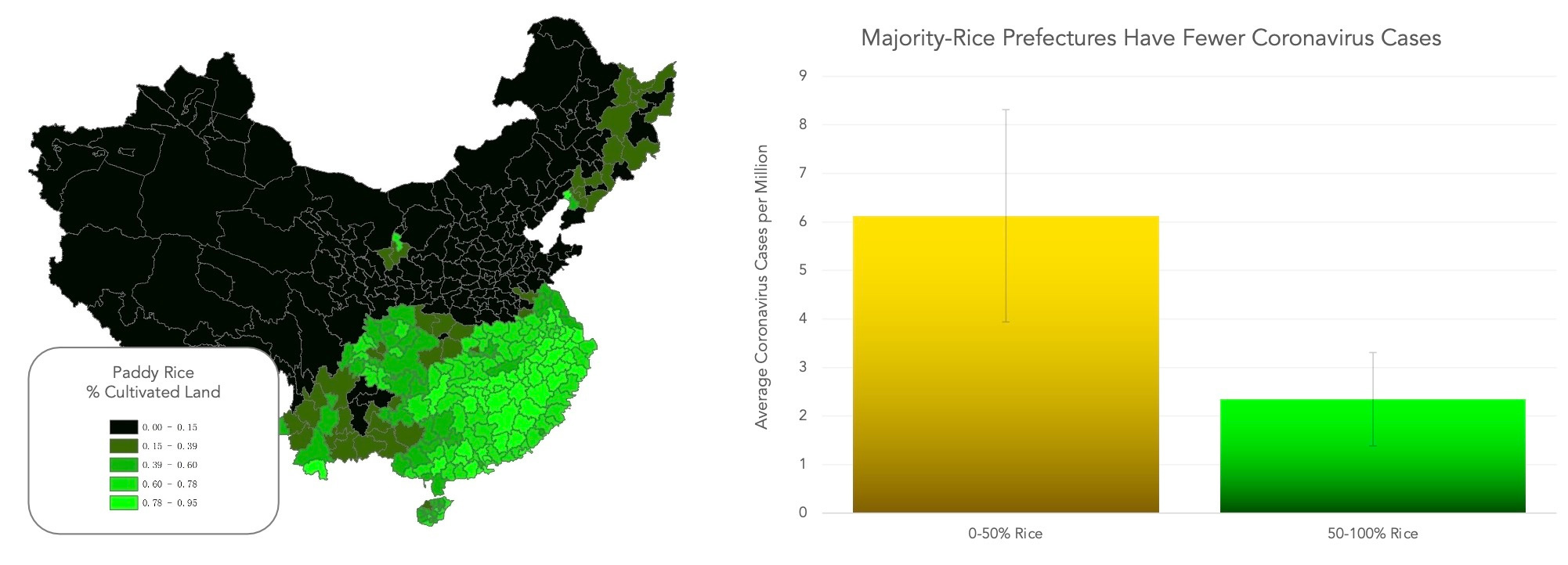
It's easy to see the case counts and conclude that cultures that controlled Covid-19 were better off. But a new study from my research team suggests that success came at a cost. We found that people in rice-farming areas of China reported more anxiety during the pandemic.
To measure anxiety, we surveyed 1,186 people across China from 2020 to 2021. The dots on the map show where respondents came from.
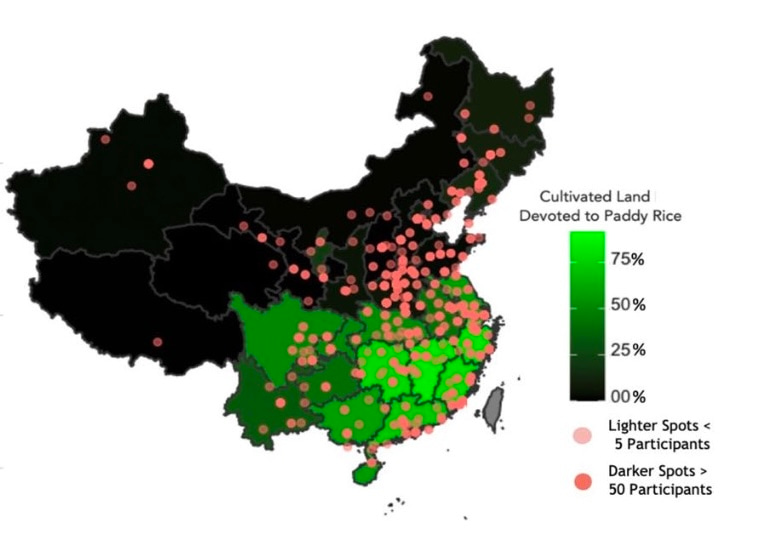
People in rice areas reported more anxiety on average.
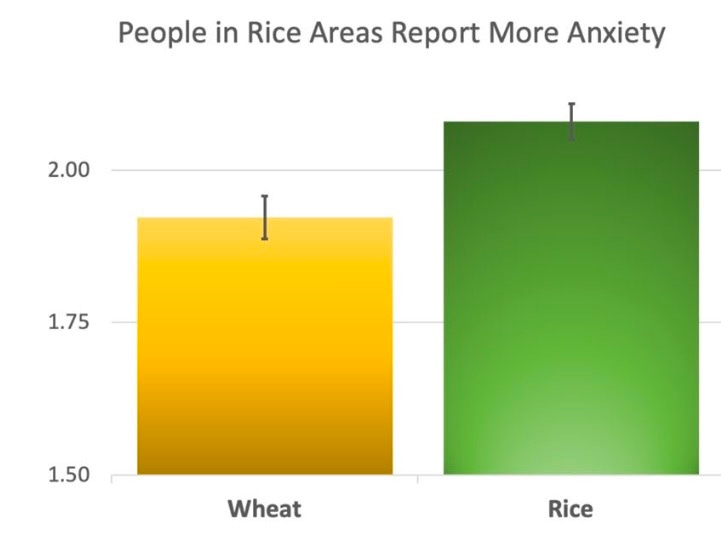
It’s interesting that people in rice cultures were less likely to die from Covid but more anxious about it. This fits with data around the world. Countries with the fewest cases tended to fear the virus the most.
 Was anxiety a bug or a feature? Perhaps that anxiety is what led to fewer deaths. For example, that anxiety could push people to cut social ties. We know that cultures with fewer social ties had fewer deaths on average.
Was anxiety a bug or a feature? Perhaps that anxiety is what led to fewer deaths. For example, that anxiety could push people to cut social ties. We know that cultures with fewer social ties had fewer deaths on average.
Later in the pandemic, people who were more worried about getting Covid were more likely to get the vaccine. That suggests anxiety and worry could be helpful. Or put another way, complacency could be costly.
It’s easy to count deaths. It’s harder to measure worry. If we want to calculate how well societies did at handling the pandemic, we should take into account all the costs, not just the parts that are the easiest to count.
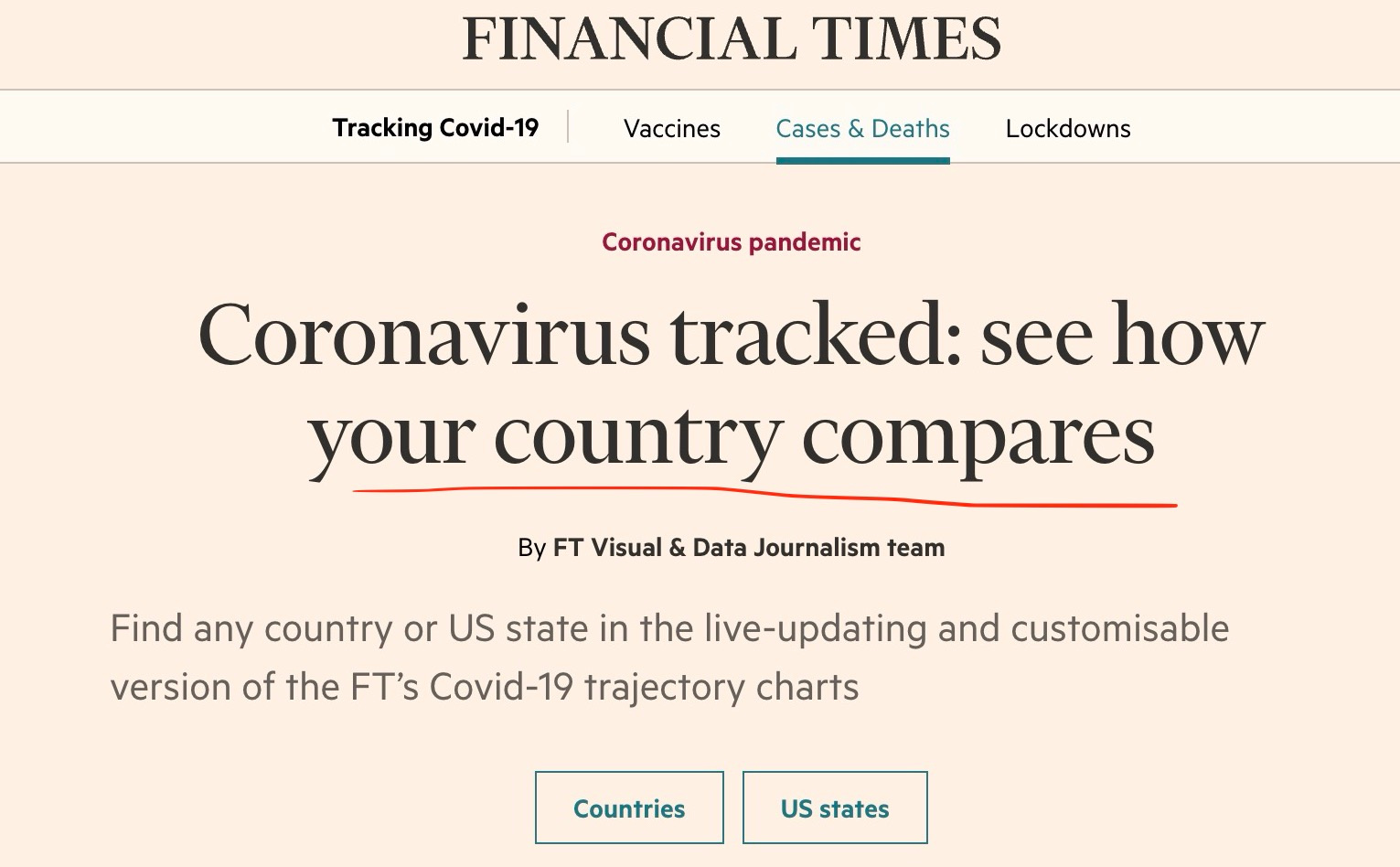
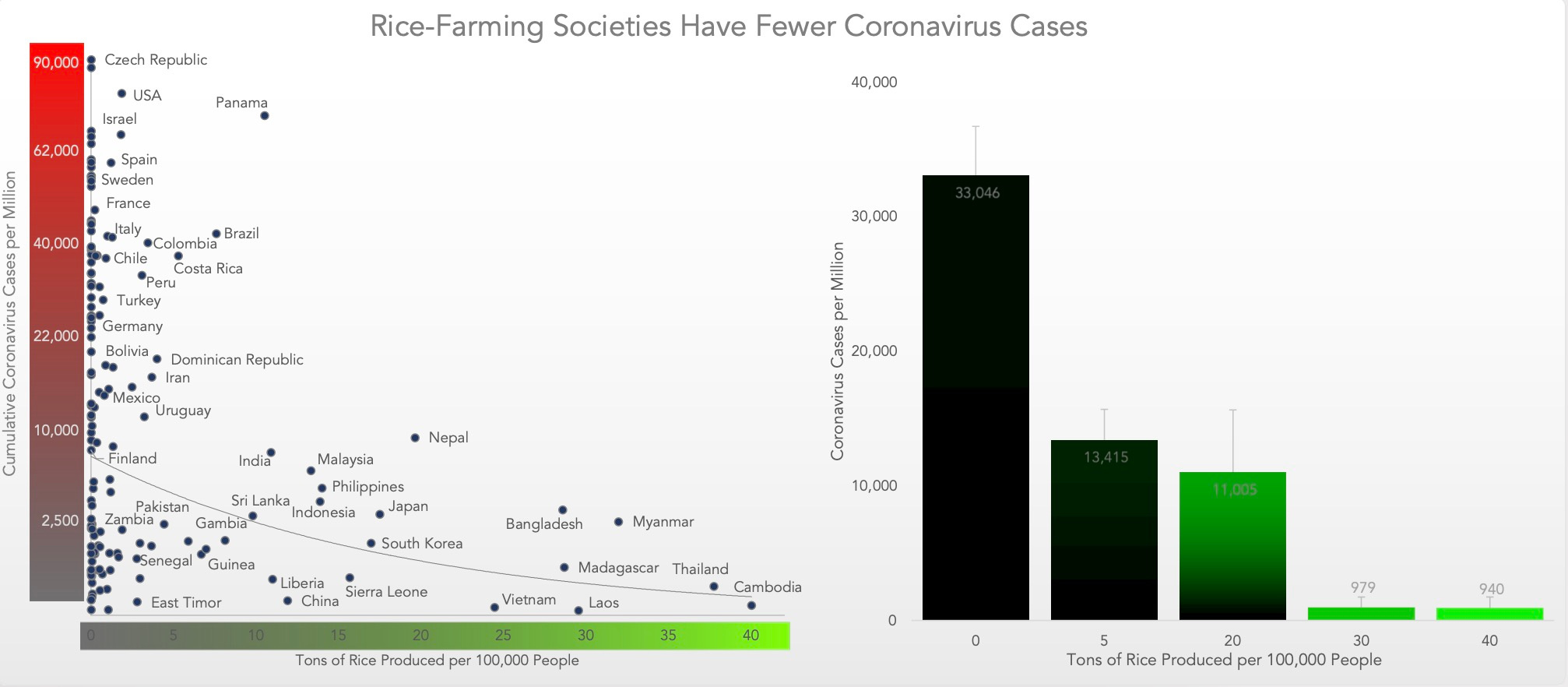





Please sign in or register for FREE
If you are a registered user on Research Communities by Springer Nature, please sign in
The full paper is available without a paywall here: https://papers.ssrn.com/sol3/papers.cfm?abstract_id=5317213